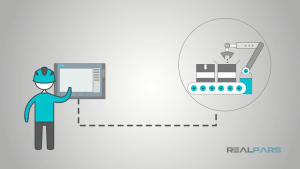Brain-Computer Interface (BCI)
- The goal of the quickly developing field of brain-computer interfaces (BCI) is to establish a direct line of communication between the human brain and outside technologies. BCIs allow people to operate machinery, computers, or prostheses with just their thoughts by decoding electrical impulses from the brain. This technology has the potential to Brain-Computer Interface (BCI). revolutionize a number of fields, most notably human augmentation and healthcare. Let’s take a deeper look,Brain-Computer Interface (BCI)
- Principal Characteristics of BCIs: Direct Brain Control:
- Bypassing conventional input methods like keyboards or touchscreens, brain-computer interfaces (BCIs) enable people to operate devices (such as computers, robotic arms, or wheelchairs) directly with their brain activity.
BCIs that are invasive and non-invasive: - Non-Invasive BCIs: These devices identify brain waves by using scalp-based sensors (EEG). Although they are less accurate and have less control, they are generally safer.
More precise control is possible with invasive BCIs, which entail surgically implanting electrodes in the brain. However, there are dangers associated with surgery and possible long-term consequences.
Instantaneous Communication: - Real-time interaction is made possible by BCIs, which enable brain impulses to quickly control external devices, send messages, launch apps, and handle virtual objects.
Healthcare Applications: - Control of Prosthetics: Amputees and people with mobility limitations can regain more natural movement by using BCIs to control artificial limbs.
- Instantaneous Communication:Treating Neurological Disorders: By stimulating or rerouting brain signals, brain-computer interfaces (BCIs) are being investigated as possible treatments for diseases like paralysis, ALS (amyotrophic lateral sclerosis), and stroke
- Communication Applications:BCIs give people with severe disabilities (such those with spinal cord injuries, locked-in syndrome, or ALS) new ways to communicate by allowing them to type or talk with their minds, which enhances their quality of life.
Enhancement of Cognitive Function and Brain Training: - BCIs could be utilized in the future to improve cognitive abilities like memory and focus, or even to enable new kinds of learning and communication straight from the brain.
Gaming and Entertainment: - More immersive virtual reality (VR) and gaming experiences are being made possible by BCIs, which allow users to manipulate certain elements of a game or virtual world using just their brainwaves.
Technical Restrictions:
- Accuracy and Precision: Because brain waves are challenging to interpret, the accuracy and complexity of activities that can be performed by current non-invasive BCIs are constrained.
Invasive Procedures: Although more precise, invasive BCIs carry the danger of infection, tissue rejection, and long-term health issues.
Long-Term Effect: - The long-term implications of BCIs on the brain remain unclear, particularly when it comes to intrusive implants. More research is required on problems like rejection, brain tissue injury, and even reliance on external equipment.
Standardization and Regulation: - To guarantee safety, efficacy, and moral application, uniform regulations will be required when BCIs are incorporated into healthcare and other sectors.
- Future Prospects: Enhanced Neuroplasticity: By using focused brain stimulation to promote brain healing and regeneration, research into BCIs may enable more successful brain rehabilitation following an injury or stroke.
Customized Care: Based on each person’s distinct brain signature, BCIs could provide individualized treatments for learning impairments, mental health issues, and other cognitive problems.
Integration with Other Technologies: In order to improve human skills and rethink how we engage with the digital world, BCIs are probably going to be integrated with AI, IoT, and other cutting-edge technologies.
In conclusion, brain-computer interfaces have a lot of potential, especially for improving medical care and giving people new ways to engage with their surroundings. While there are still serious technical, ethical, and .
Share this content:














1 comment